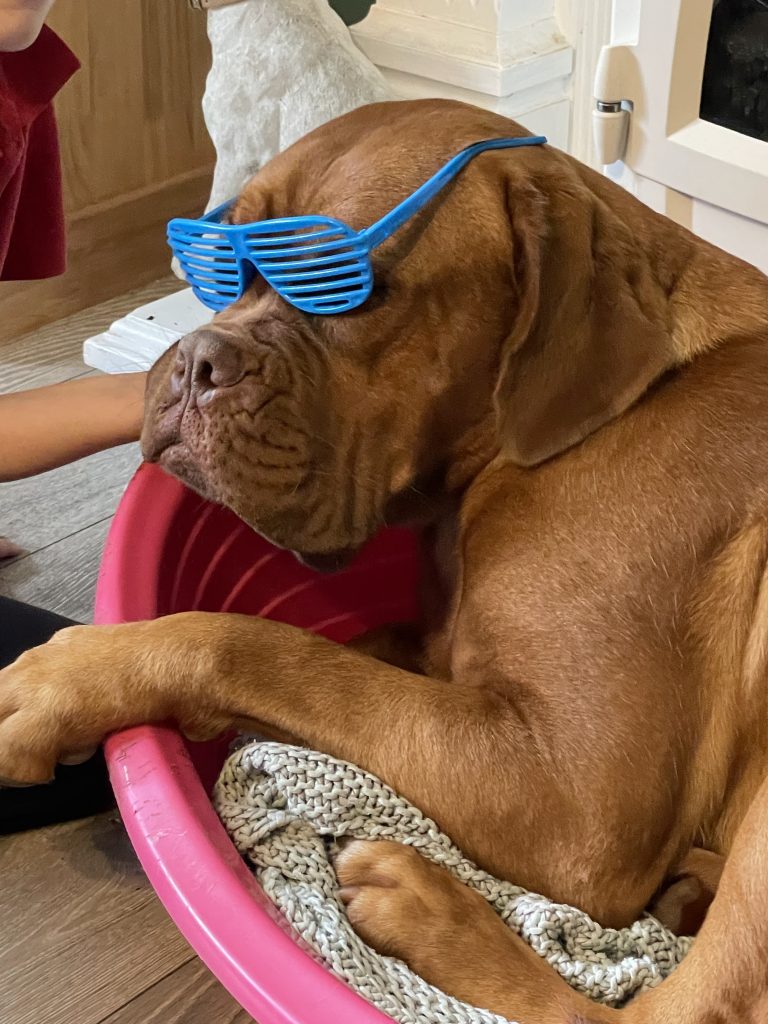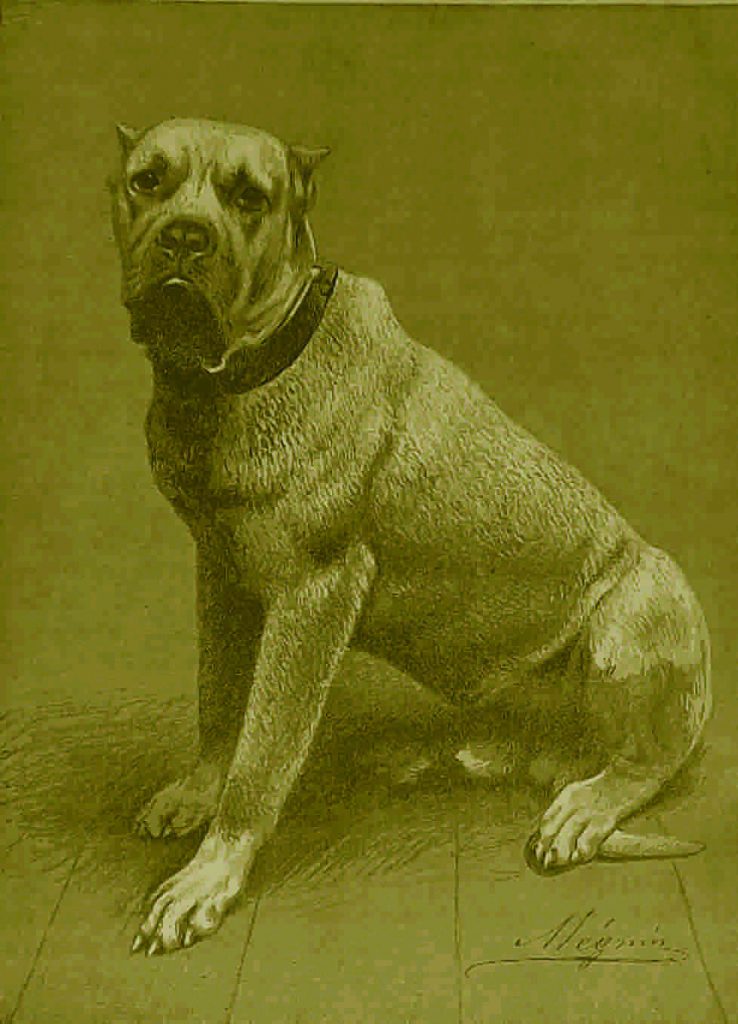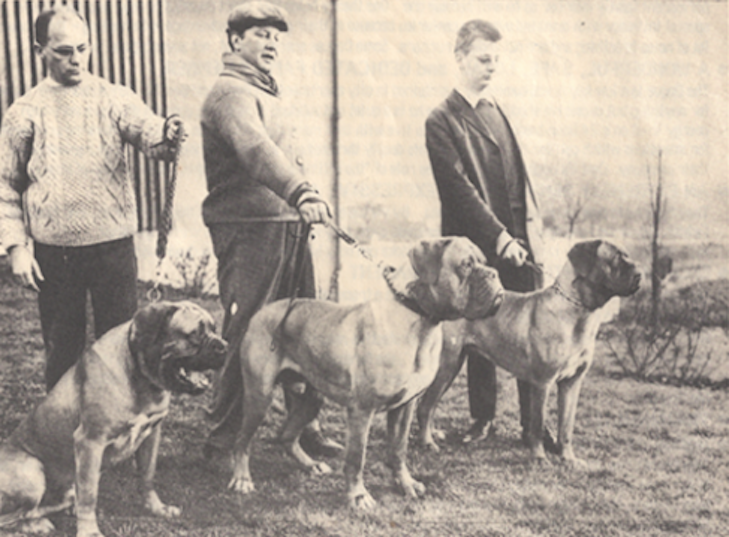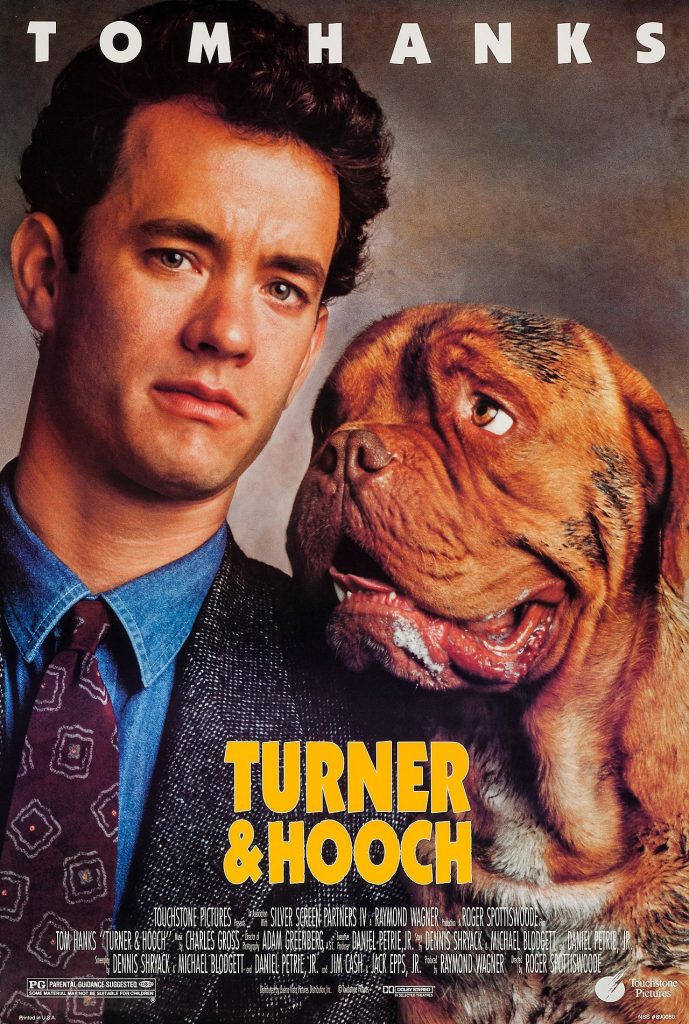The history of the Dogue de Bordeaux is long and can be traced back to the 14th century! The Dogue de Bordeaux was once known as the French Mastiff and, as with many breeds, several theories exist on its origins and development. It is likely that the original dog of this type existed in France as far back as the 14th Century, making it one of the most ancient breeds that’s native to France.
Affectionately known as the Dogue, the breed is one of the most ancient that is native to France. It is thought the Dogue could well be a descendant of a breed called the “Alan” and more especially the “alan vautre” that a French writer of the 14th Century wrote about in his book “le Livre de Chasse” which translated means the Book of Hunting. He described these dogs as having a “bite stronger than three sighthounds”.

With its traditionally cropped ears, the Dogue was an intimidating sight. They are impressive looking with their very large, distinctive heads and although they are so big, they are extremely agile and quick on their feet when they need to be and as such a Dogue de Bordeaux is more than capable of jumping great heights which includes garden fences.
Their intimidating looks and impressive size, hides a gentle and affectionate character that in the right hands and environment together with the correct sort of training and early socialisation, the Dogue de Bordeaux is a wonderful canine companion to have around the home.

They are known as gentle giants; they are loveable, loving and adore their human family. They are fantastic around children and other animals and are laid-back, meaning they are almost the perfect dog! I’d say almost because of the amount of drool…
This is why they have been such a popular choice in their native France and why the breed is gaining popularity elsewhere in the world including here in the UK where they have fast become one of the more popular breeds in the country.
Although the actual origins of the breed have been lost in time many people think that the Dogues heritage can be attributed to a time when the region of Bordeaux was ruled by the English who took their bulldogs and mastiffs with them.
They mated their native English dogs with local cattle dogs as well as hounds. As such it is thought that English Mastiffs and other breeds could well be in the breed’s ancestry, although this is often hotly disputed.
Documents exist which record the sale of English Bullmastiffs in the Bordeaux area in the late 19th century and it is likely that this blood played its part in the development of the breed.
Sadly, like many of the Molosser breeds, the Dogue de Bordeaux was used in the fighting pits, often against bull or bear.

At the time, there were quite a few smaller fighting dogs in France, namely the Doguin d’Aquitaine as well as the Bulldogue du Midi. There were also giant breeds like the Toulouse Bulldog which is thought to have been used to develop early French Mastiffs.
It is also thought that Spanish breeds including the Alano Espanol as well as the Perro de Toro Espanol may have been an influence in early baiting dogs that were around in France back in the day.
The breed suffered a massive setback in the French revolution in the 1780s when they were slaughtered alongside their aristocratic owners.
During the 19th Century, Dogues were not well known outside of the region of Aquitaine where they were often seen hunting in the field, tracking down larger game which included wild boar.
They were also used to guard properties as well as herds of cattle and were a popular choice of French butchers thanks to their strong guarding instincts.
 |  |  |
It was not until 1863 that the first French dog show was held in the capital of Paris and when the Dogue de Bordeaux was first exhibited under that name.
With this said, over time there have been various types of “dogues” which included the Dogue de Toulouse, the Dogue de Paris as well as the Dogue de Bordeaux which is thought to be the ancestor of the Dogues we see today.
The first breed standard was established in France in 1896 which was reviewed in 1910 only to be renewed again in 1971. The breed standard was again reviewed by Raymond Triquet and Philippe Serouil, the president of the French Dogue de Bordeaux Club in 1993. Amendments to the standard were then added in 2007.

The first record of Dogue de Bordeaux in the UK can be seen in The Kennel Club Gazette in 1897 but they fell out of favour when ear cropping was banned and some of the dogs were exported and others died.
Personally, I’m glad that ear cropping was banned – I don’t agree with it myself!
The breed was not seen again in the UK until late in the 20th Century and sadly suffered from commercialisation, attracting many to the breed for its macho image and some of the stock was very poor and unsound.
Between the two World Wars, the breed suffered with their numbers dropping dangerously low to such an extent that it was thought that Dogues might vanish altogether with Hitler having done everything in his power to ensure the breed’s demise. By the end of the Second World War, there were less than 10 breeding pairs left in the entire world.
Fortunately, and thanks to the efforts of breed enthusiasts which included Professor Raymond Triquet, breed numbers started to rise again during the 1960s and continued to do so for the following decades.

The breed was seen to change from a dog that was similar to the Cane Corso, to one that successfully adapted to living alongside man as well as other animals.

The Dogue de Bordeaux was to become one of the most popular breeds not only in their native France but in the UK too. The breed was officially recognised by The Kennel Club in 1997 and has made lots of headway with the dedication of serious breeders.
The Kennel Club awarded the breed championship status in 2016 and today the number of dogs being registered is continuing to rise. ❤❤
 |  |  |  |
This post was compiled from various sources; including the Kennel Club, pets4homes, breed books, and our own experience and knowledge.


